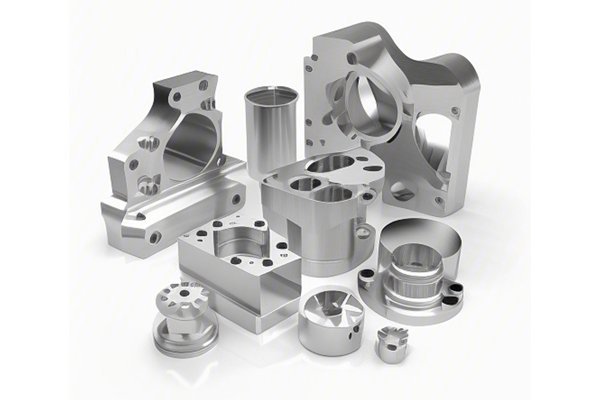Did you know that the CNC machining industry has grown at an annual rate of nearly 5% since 2015? As businesses continue to pivot towards precision manufacturing to meet the demands of industries ranging from aerospace to medical, the capability to adapt rapidly to fluctuating order volumes becomes critical. The ability to adjust production plans not only affects profitability but also impacts customer satisfaction and the competitive edge of a CNC machining business.
In this blog, we will dissect the importance of flexibility in CNC machining production plans, explore strategies for adapting to varying order volumes, and offer detailed solutions to common challenges faced in this area. Whether you’re a seasoned professional or new to the industry, the insights shared here will be invaluable for enhancing your operational efficiency.
Understanding CNC Machining: A Brief Overview
Before delving into strategies for adapting production plans, it’s vital to understand what CNC (Computer Numerical Control) machining is. CNC machining involves the use of computer-controlled machines to create parts and components with high precision. Materials such as metals, plastics, and composites are shaped through cutting, drilling, milling, and turning processes. The rise of CNC technology has made it indispensable in industrial production due to its efficiency and accuracy.
What is Order Volume Variation?
Order volume variation refers to the fluctuations in the amount of product required by clients over a specific period. This variation can be due to multiple factors including seasonal demands, market trends, economic conditions, and even customer preferences. Handling these fluctuations effectively is key to maintaining steady production and ensuring that resources are utilized efficiently without excess or shortages.
Why Adapting Production Plans is Essential
Adapting production plans according to order volume is essential for several reasons:
Strategies for Adapting CNC Machining Production Plans
Advanced Planning and Scheduling (APS) systems help create dynamic and flexible production schedules based on real-time data. This technology can analyze order trends, machine capacity, and workforce availability, allowing for more informed decision-making.
Solution: Invest in APS software that integrates with your existing systems and provides real-time insights. Train your staff to utilize these tools effectively, ensuring they can adapt quickly to changing conditions.
Lean manufacturing focuses on eliminating waste while continuously improving processes. By applying lean principles, CNC machining facilities can refine production plans to respond to order volume changes more efficiently.
Solution: Evaluate existing processes for waste, whether it’s excess inventory, unnecessary steps, or excess labor. Adopt just-in-time (JIT) production strategies to reduce lead times and inventory carrying costs.
Cross-training employees ensures that staff can perform multiple roles within the shop floor. This flexibility allows for a more adaptable workforce that can be deployed where needed most depending on order volume.

Solution: Implement a robust training program that equips employees with various skills, from machine operation to quality control. This approach not only increases resilience but also enhances employee satisfaction.
Accurate demand forecasting can help anticipate changes in order volumes. By analyzing historical data and market trends, CNC manufacturers can better prepare for fluctuations.
Solution: Use data analytics tools to gather insights from past orders and market trends. Incorporate feedback from sales and marketing teams to refine your forecasting models.
A strong relationship with suppliers ensures that you can quickly secure materials as needed, even during spikes in demand. Strategic partnerships can also improve negotiation terms, allowing for more favorable pricing and delivery schedules.
Solution: Engage with suppliers to develop contingency plans. Having reliable sources that understand your business needs can facilitate faster response times.
Case Study: Flexibility in Action
Let’s consider a fictional CNC machining company, Precision Parts Co. The firm focused primarily on the aerospace industry but noticed fluctuations in order volumes. By employing the strategies laid out above, Precision Parts Co. implemented an APS system that analyzed their production capabilities alongside customer order history.
For instance, during peak seasons, the APS system alerted management to allocate additional resources, switch shifts for staff, and streamline logistics for timely deliveries. In slower periods, they effectively minimized labor costs through staff reassignments and optimized machinery schedules to keep operational expenses low.
Common Challenges and Solutions
The Importance of Continuous Improvement
The dynamics of the CNC machining sector mean that staying stagnant can lead to falling behind competitors. It is essential to foster a culture of continuous improvement within the business. Challenge your team to develop new ideas that enhance operations, and embrace feedback from employees and customers alike.
Adapting CNC machining production plans to meet varying order volumes is not merely a business strategy; it’s a necessity in today’s competitive manufacturing landscape. By implementing advanced planning systems, lean principles, cross-training employees, demand forecasting, and building strategic supplier relationships, companies can thrive regardless of market fluctuations.
As today’s CNC machining industry continues to innovate, it’s the companies that prioritize flexibility in their production processes that will set themselves apart and ensure longevity. So, as you immerse yourself in the CNC world, remember that the ability to pivot and adjust is the key to success. Embrace these strategies and lead your company toward a more adaptive future.






